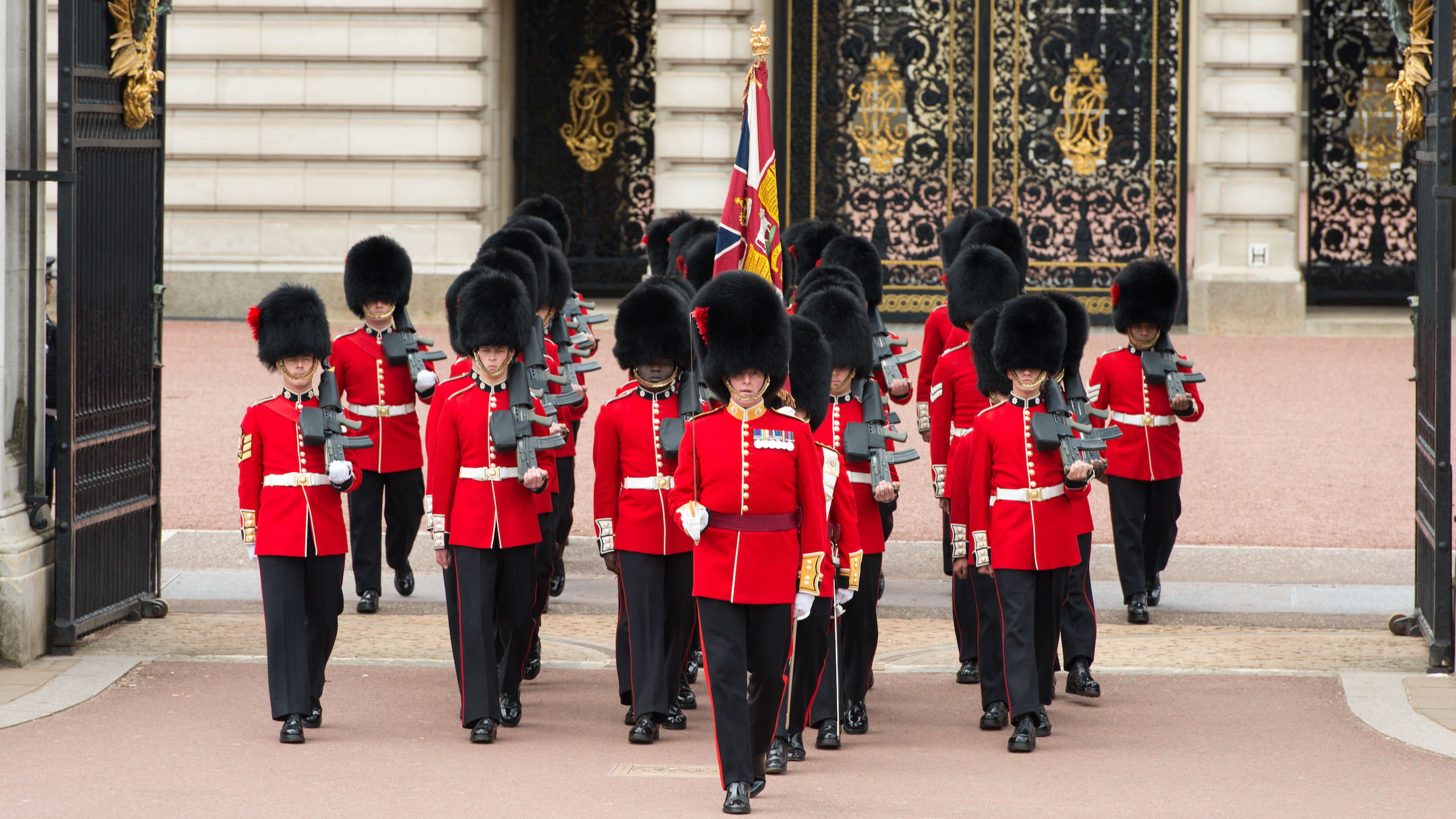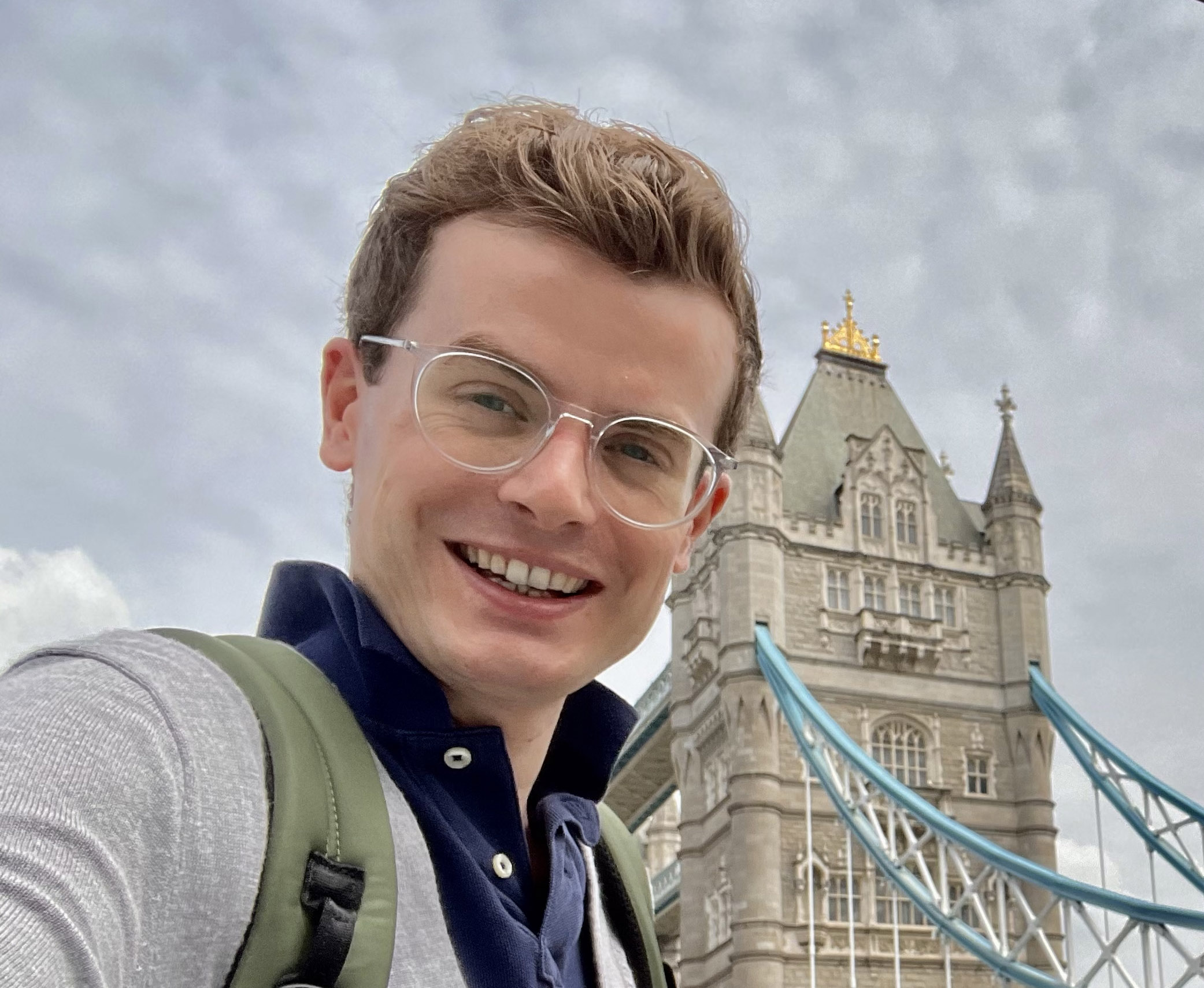Why do the queen's guards wear such tall hats?
To scare the French.

They're up there with double-decker buses, red phone booths and Big Ben when it comes to quintessentially British things, but the uniforms sported by Queen Elizabeth II's guards weren't designed to look aesthetically pleasing. They were devised as essential accoutrements of battle against the United Kingdom's enemies during the 1800s.
So why do these guards wear tall black hats and conspicuous red tunics?
As hard as it may be to believe, the uniform was supposed to intimidate opposing armies.
"The idea was that you made your foot soldiers look taller and therefore more fearsome," said Richard Fitzwilliams, a royal commentator based in London. "They used to fulfill a practical need for a foot soldier in battle. They were used when fighting the French in the Napoleonic wars. In fact, Napoleon's Imperial Guard wore them, too."
Related: What was the largest empire in the world?
The hats are known as bearskins because — you guessed it — they're made of bear fur. The pelts come from Canadian black bears (Ursus americanus) that are culled each year to control their numbers. That means no bears are killed specifically to make the 18-inch-tall (46 centimeters) helmets, but the idea still makes some people uncomfortable. In fact, since the U.K. left the European Union in 2020, there has been talk of outlawing the fur trade altogether. For now, though, the British Army buys between 50 and 100 of the hats, which cost about $900 each, per year, according to the British high-society magazine, Tatler.
These days, the headpieces add a bit of pomp and circumstance to the British Army's uniform when its soldiers are performing ceremonial duties, such as the changing of the guard at Buckingham Palace or the annual parade for the queen's official birthday. But those who wear the bearskins also don regular uniforms in camouflage when the time calls for it, performing other, non-ceremonial roles in the British Army.
Get the world’s most fascinating discoveries delivered straight to your inbox.
"If you look at the queen's guards and think they only have ceremonial duties, then you're making a big mistake," Fitzwilliams told Live Science. "All of them are serving soldiers on rotation from other active military roles."

As for the red tunics, which are worn during the summer months (longer gray coats are worn during the winter), there's a long-standing rumor that the Brits chose scarlet because it disguised bloodstains, which were bad for morale and unsightly. But that's nonsense, Fitzwilliams said. Instead, it all came down to frugality.
"The reason British soldiers traditionally wore red is because it was the cheapest and most readily available dye," Fitzwilliams said. "These days, it seems like a bad color for battle because it would mark you out, but in the smoke and confusion of battle, it also allowed you to distinguish your friends from foes and stopped you being killed by your own side." After all, these uniforms hark back to the days of traditional European warfare, where battling sides showed up on a given field and literally formed lines to attack each other — a far cry from guerrilla tactics.
So, the British queen is guarded by officers who wear the same uniforms as soldiers on active duty did two centuries ago. Anachronistic, maybe, but it's traditions like this that make the British royals famed the world over, Fitzwilliams said. "We have the world's most high-profile functioning monarchy, and the guards play an important role," he said. "They are one of the great tourist features of London."
Originally published on Live Science.

Benjamin is a freelance science journalist with nearly a decade of experience, based in Australia. His writing has featured in Live Science, Scientific American, Discover Magazine, Associated Press, USA Today, Wired, Engadget, Chemical & Engineering News, among others. Benjamin has a bachelor's degree in biology from Imperial College, London, and a master's degree in science journalism from New York University along with an advanced certificate in science, health and environmental reporting.



